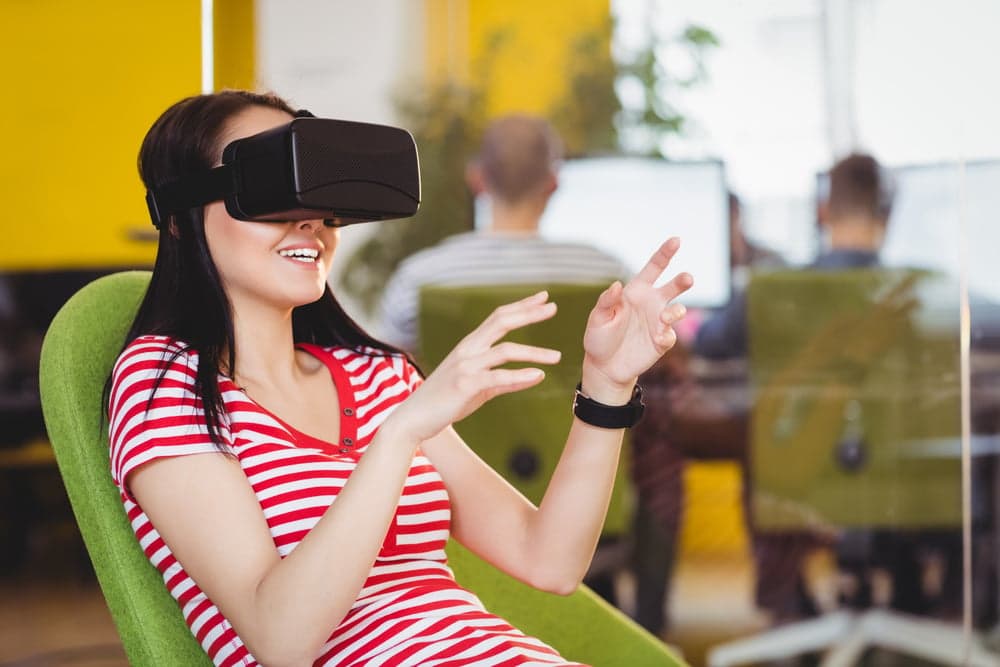Revolutionizing Education with VR Training: Advancing ROI and Unveiling Future Prospects
Get a comprehensive look into the potential of VR training in revolutionizing education, enhancing ROI, and unveiling promising future trends in this detailed guide.

VIG Learning Team

Introduction
Imagine a world where students can explore the ruins of ancient civilizations, traverse the complex structures of the human body, or journey through the seemingly infinite cosmos, all without leaving their classrooms. This isn't a storyline plucked from a sci-fi novel but a tangible reality made possible through the transformative power of virtual reality (VR) training in education. This comprehensive guide explores the profound impact and potential of VR training, its ability to enhance return on investment (ROI), and the promising future prospects this technology has in store.
Grasping the Impact of VR Training in EducationVirtual Reality, a technology that creates a simulated experience which can either mirror or deviate entirely from the real world, is disrupting the traditional educational landscape. It provides an immersive, experiential form of learning that significantly enhances student engagement, understanding, and information retention. According to a study published in the Journal of Medical Internet Research, learners who used VR to study complex subjects displayed superior performance in recall and retention tests compared to their non-VR using counterparts.
The Neuroscience Behind VR LearningThe effectiveness of VR training isn't just a fortunate coincidence. It's deeply entwined with our brain's cognitive functions. VR creates a three-dimensional environment that engenders a more tactile and experiential engagement with learning content.
This interactive engagement triggers increased activity in the hippocampus, the part of the brain responsible for long-term memory storage and spatial navigation. By stimulating these cognitive faculties, VR facilitates more effective learning and longer retention of information.
Key Benefits of VR
Training in EducationVR training brings several advantages to the table, presenting solutions to challenges that traditional learning methods often grapple with:1.
- Active Learning: VR fosters an interactive learning environment that encourages learners to engage directly with the content, resulting in improved focus and better retention of information.2.Experiential Learning*: VR facilitates 'learning by doing' experiences, which are particularly effective for understanding complex concepts or procedures.
- Safe Environment: VR provides a controlled, risk-free setting for learners to make mistakes and learn from them. This is especially beneficial in high-stakes fields like medical or technical training.
- Personalized Learning: VR can deliver bespoke learning experiences tailored to each student's pace, learning style, and interests.
Enhancing ROI with VR TrainingWhile the initial investment in VR technology may seem substantial, the long-term returns and cost savings make it a worthwhile expenditure.
- Reduced Training Costs: By eliminating the need for physical resources, VR significantly reduces the overall cost of training.2.
- Increased Productivity: The efficacy of VR training results in more proficient, confident learners, which in turn boosts overall productivity.3.Improved Retention Rates*: The immersive nature of VR training enhances retention rates, thus reducing the need for repeated training and further cutting down costs.
Best Practices for
Implementing VR Training in EducationImplementing VR into your education strategy may seem daunting initially, but by following these best practices, the transition can be seamless:-Start Small: Begin with a single course or module and gradually expand as you become more comfortable with the technology.-Train the Trainers: Ensure that your educators are well-versed with the technology. They should be capable of troubleshooting basic issues and guiding students effectively.
- Blend with Traditional Learning: VR should supplement, not replace, traditional learning methods. Use it as a tool to enhance the understanding of complex topics.
Future Trends in VR
TrainingAs VR technology continues to advance, we can anticipate several emerging trends in the education sector:1.
- More Immersive Experiences: Future VR tools will deliver even more immersive learning experiences with enhanced graphics and hyper-realistic simulations.2.Integration with AI*: The convergence of AI and VR will create personalized learning pathways, adapt to individual learning styles, and provide real-time feedback.
- Affordable Solutions: As technology progresses, VR tools will become more affordable and accessible, making them a standard feature in most educational institutions.
Conclusion
The potential of VR training in education is vast.
While its implementation may require an initial investment, the benefits of enhanced engagement, improved retention, and increased ROI make it an exhilarating prospect for the future of education. As technology continues to evolve, we can expect VR to become a staple in classrooms worldwide.The VIG Learning Team, known for their expertise in integrating VR technology into learning strategies, can help you navigate this thrilling new frontier in education.
With our guidance, you can harness the power of VR training to deliver enhanced learning experiences and achieve superior educational outcomes.
Ready to Transform Your Learning Strategy?
VIG Learning specializes in creating innovative, effective learning solutions that drive real business results. Let's discuss how we can help you achieve your training goals.